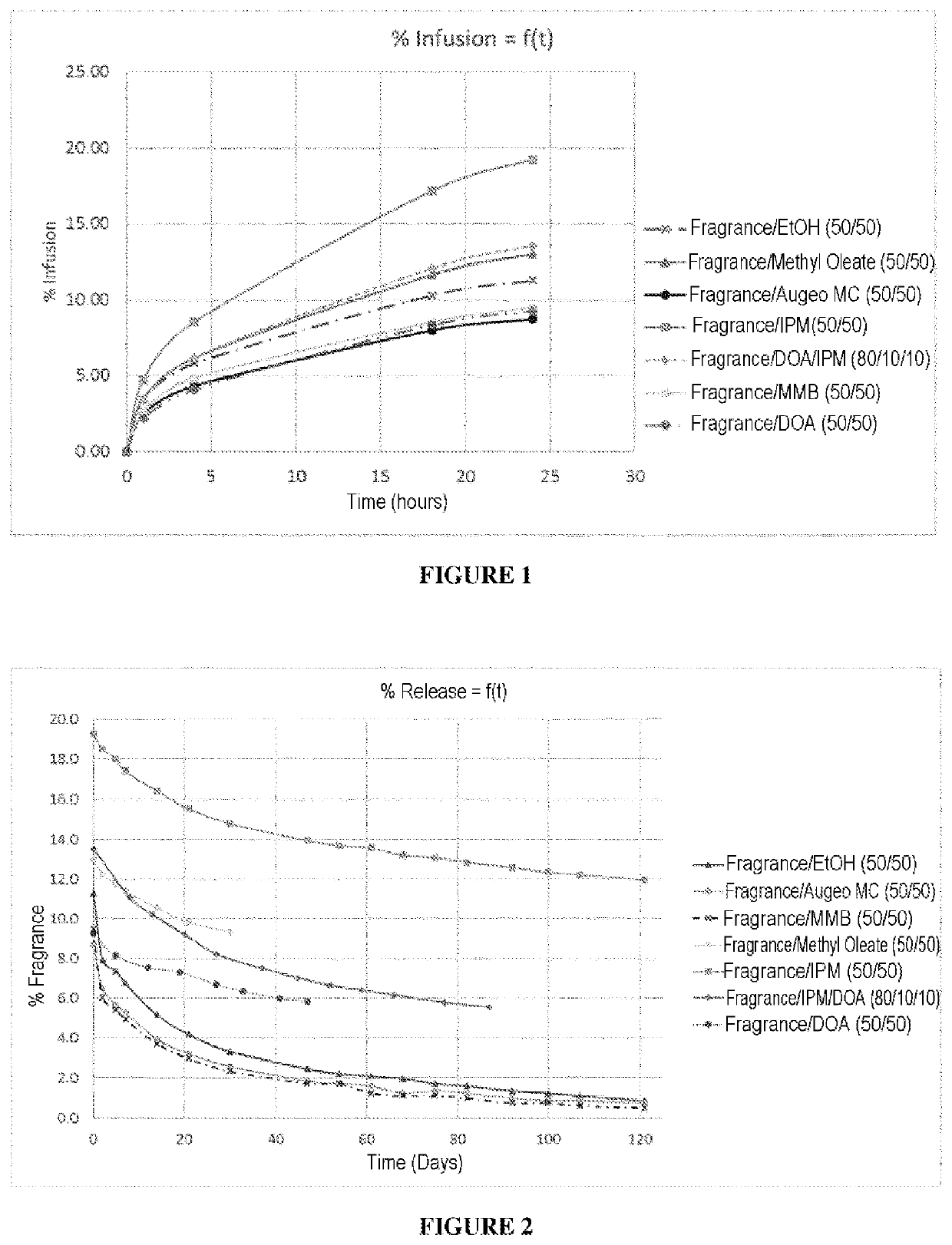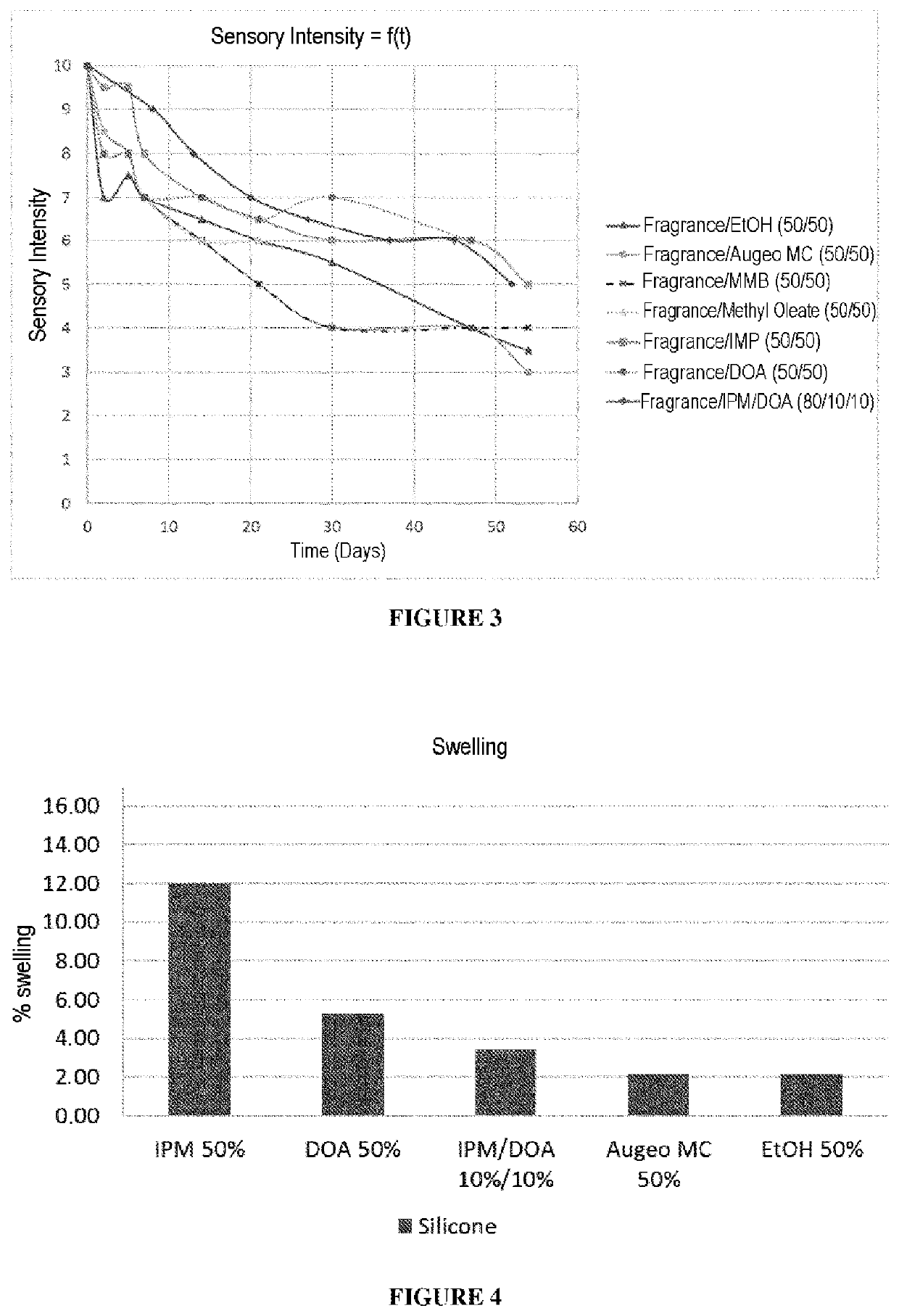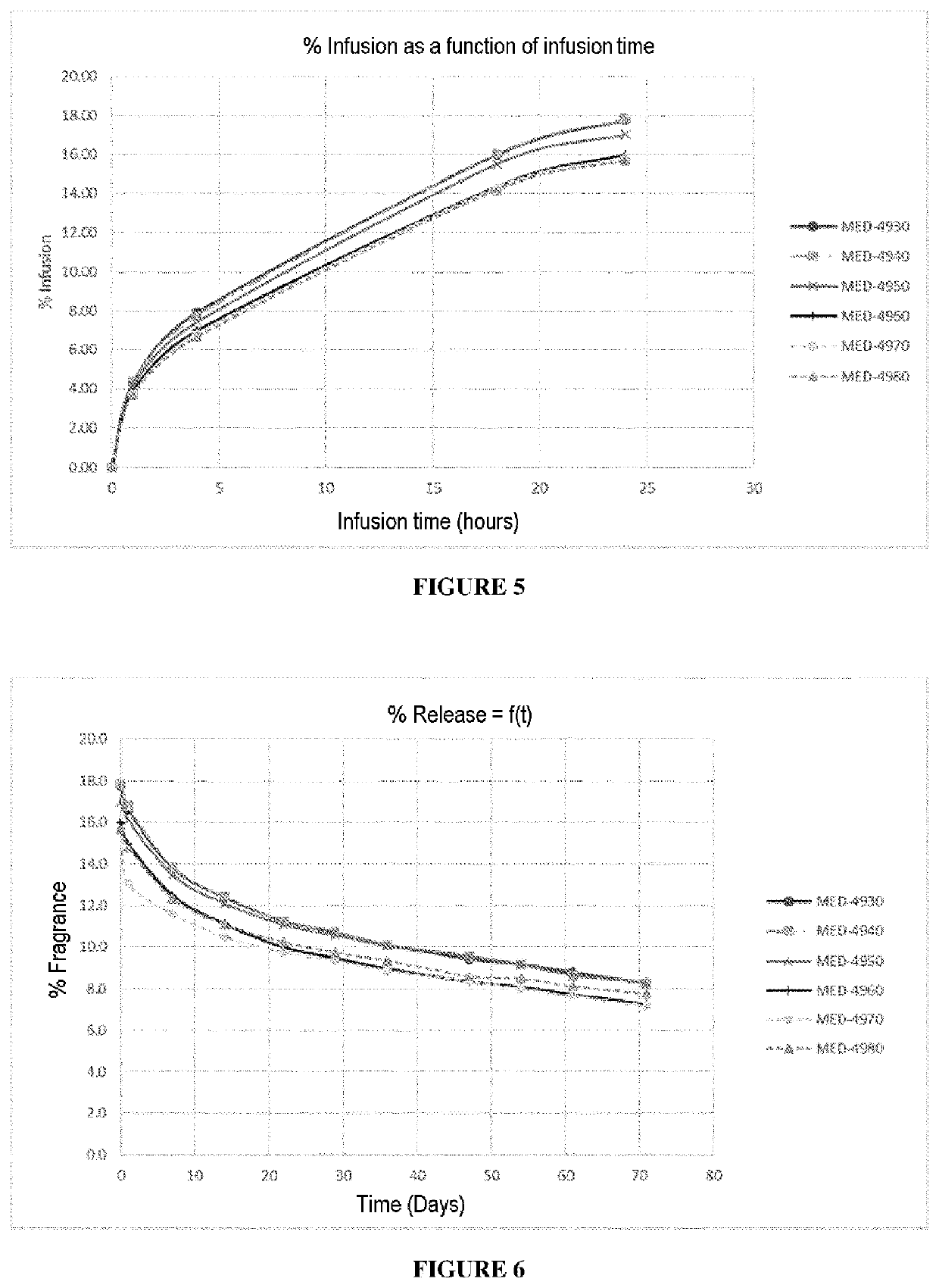Solid polymeric material impregnated with a volatile organic substance and a specific ester and uses of same
a technology of volatile organic substances and solid polymers, which is applied in the direction of disinfection, biocide, detergent compounding agents, etc., can solve the problems of not being able to achieve a sufficient level, affecting the effectiveness of these diffusers, and prone to rapid evaporation, so as to increase the amount of volatile substances incorporated, increase the effect of its size and constant shap
- Summary
- Abstract
- Description
- Claims
- Application Information
AI Technical Summary
Benefits of technology
Problems solved by technology
Method used
Image
Examples
example 1
of the Solvent on the Rate of Infusion
[0043]The rate of infusion in a silicone material of a fragrance carried in various solvents was measured. To do this, identical silicone elastomer rings were each weighed and then immersed for various periods of time (1 h, 4 h, 18 h and 24 h) in a solution containing the same fragrance in a different solvent, namely: ethanol (EtOH), methyl oleate, isopropylideneglycerol (Augeo MC), isopropyl myristate (IPM), 3-methyl-3-methoxybutanol (MMB), dioctyl adipate (DOA) and a 50:50 (w / w) mixture of isopropyl myristate and dioctyl adipate (DOA / IPM). The fragrance concentration in the solution ranged from 50% by weight (for the individual solvents) to 80% by weight (for the mixture of solvents). The ring was removed at the end of the time period in question and weighed to determine the percentage of fragrance that it contained.
[0044]The results of these tests are illustrated in FIG. 1. As shown in this figure, isopropyl myristate makes it possible to obt...
example 2
of the Solvent on the Rate of Release
[0045]The rate of release or of diffusion of a fragrance carried in various solvents and infused in the same silicone material was measured. To do this, identical silicone elastomer rings were each immersed for 24 h in a solution containing the same fragrance in a different solvent, namely: ethanol (EtOH), methyl oleate, isopropylideneglycerol (Augeo MC), isopropyl myristate (IPM), 3-methyl-3-methoxybutanol (MMB), dioctyl adipate (DOA) and a 50:50 (w / w) mixture of isopropyl myristate and dioctyl adipate (DOA / IPM). The fragrance concentration in the solution ranged from 50% by weight (for the individual solvents) to 80% by weight (for the mixture of solvents). The ring was then weighed after various storage times at ambient temperature in order to determine the percentage of fragrance remaining in the ring.
[0046]The results of these tests are illustrated in FIG. 2. As shown in this figure, the fragrance release kinetics depend on the solvent teste...
example 3
of the Solvent on the Sensory Intensity of the Fragrance
[0048]The sensory intensity of a fragrance carried in various solvents and infused in the same silicone material was measured. To do this, identical silicone elastomer rings were each immersed for 24 h in a solution containing the same fragrance in a different solvent, namely: ethanol (EtOH), methyl oleate, isopropylideneglycerol (Augeo MC), isopropyl myristate (IPM), 3-methyl-3-methoxybutanol (MMB), dioctyl adipate (DOA) and a 50:50 (w / w) mixture of isopropyl myristate and dioctyl adipate (DOA / IPM). The fragrance concentration in the solution ranged from 50% by weight (for the individual solvents) to 80% by weight (for the mixture of solvents). The ring was then stored at ambient temperature in a cupboard for two months. A panel of trained experts evaluated the sensory intensity of the fragrance after various storage times. Said intensity was scored on a scale of 0 to 10 where 10 corresponds to the initial sensory intensity of...
PUM
| Property | Measurement | Unit |
|---|---|---|
| time | aaaaa | aaaaa |
| time | aaaaa | aaaaa |
| time | aaaaa | aaaaa |
Abstract
Description
Claims
Application Information
 Login to View More
Login to View More - R&D
- Intellectual Property
- Life Sciences
- Materials
- Tech Scout
- Unparalleled Data Quality
- Higher Quality Content
- 60% Fewer Hallucinations
Browse by: Latest US Patents, China's latest patents, Technical Efficacy Thesaurus, Application Domain, Technology Topic, Popular Technical Reports.
© 2025 PatSnap. All rights reserved.Legal|Privacy policy|Modern Slavery Act Transparency Statement|Sitemap|About US| Contact US: help@patsnap.com



